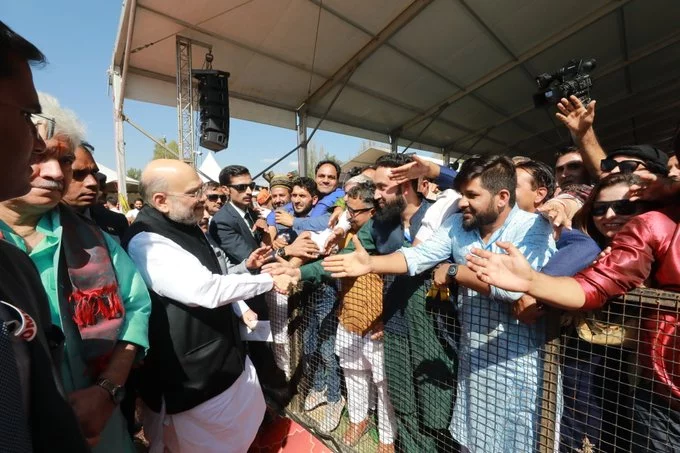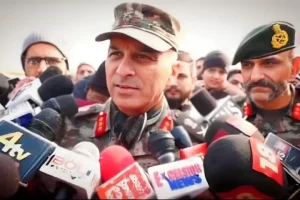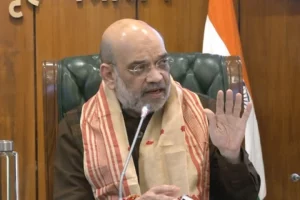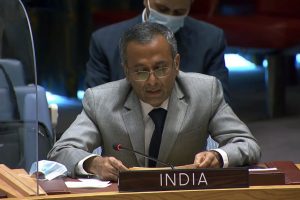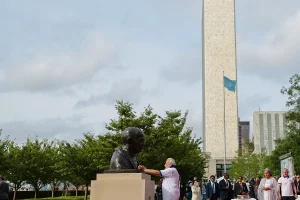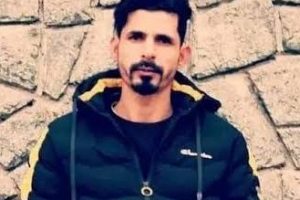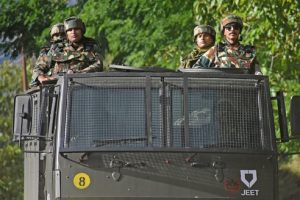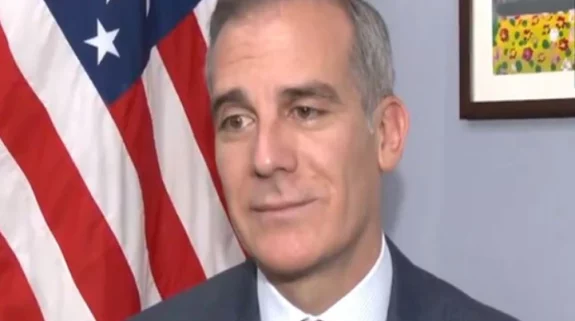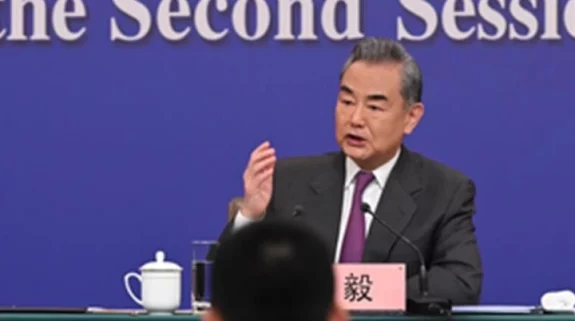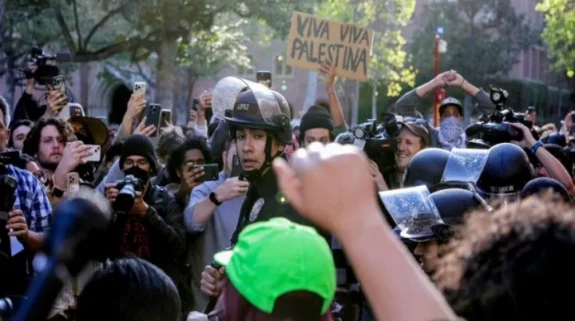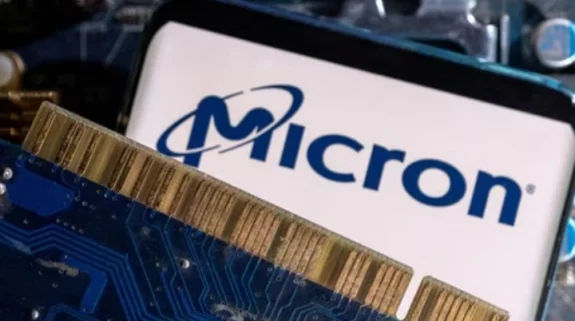The Union Home Minister Amit Shah’s massive public rally at Baramulla on Wednesday is historic for more than one reason.
While the official estimates and the local BJP leaders’ claims put the size of Shah’s gathering at around 35,000, independent observers insist that not less than 25,000 Kashmiris participated in the rally held at the sprawling playfield of the Government Degree College Baramulla. This is arguably the largest mainstream political rally in Kashmir in the last over 22 years.
Massive crowd emerge in the rally of Union Home Minister and Minister of Cooperation Amit Shah in Baramulla, North Kashmir.#TYPNews pic.twitter.com/o4fQqSrcI8
— Jammu Kashmir News Network 🇮🇳 (@TheYouthPlus) October 5, 2022
The size alone does not matter. Significantly, there was no call for hartal, no shutdown, no curfew, no restriction in the peoples’ movement—apart from some restrictions on traffic around the venue—no stone pelting, no separatist demonstration, no telecommunication or internet suspension. This scenario is for the first time, not only after the abrogation of Article 370 on 5 August 2019 but also since the day one of the separatist militancy in 1989.
Businesses as well as the government and private offices functioned normally all across the valley. All modes of transport were functional for the whole day. This was in total contrast to the situation Kashmir witnessed for the last over 30 years, in particular to the turmoil that sprouted with Burhan Wani’s killing in an encounter on 8 July 2016 and lasted till August 2019.
An ecstatic Shah said: “When I decided to hold a rally at Baramulla, people asked him who would attend it. Now this gathering of thousands and thousands is an answer to all the naysayers”. He asked Farooq Abdullah’s National Conference (NC) and Mehbooba Mufti’s Peoples Democratic Party (PDP) to open their eyes and see the valley’s ground reality.
Leaders in both, NC and PDP, insist that the Union government made the rally possible with money. They claim that more than Rs 30 crore was spent to make it a success. According to the leaders, who want to remain anonymous, more than 1,000 buses and other vehicles were hired to pull the crowds from Kupwara, Baramulla, Budgam, Ganderbal and Bandipora districts. “Some were ferried from Srinagar and south Kashmir areas”, said a PDP leader.
However, money has no role in convincing the people to continue their businesses. It is definitely mobilisation by the party cadres who got crowds from far flung areas, even as Shah’s announcement of grant of ST status to the Paharis had been already made in Rajouri on Tuesday. Attendance of the grassroots of the Pahari community was but natural.
Previously, the then Home Minister Rajnath Singh had addressed a gathering of around 5,000 people at Srinagar’s Indoor Stadium on 8 June, 2018.
This week brought Shah’s third visit to the Kashmir valley ever since the BJP assumed power in May 2014. His first visit to the valley happened on June 26-27 in 2019, just 38 days ahead of the erstwhile State’s reorganisation and abrogation of Article 370. Notwithstanding a major crackdown on the separatists and the militants, the fear of the militant was looming large in that year.
A dreaded Pakistani terrorist Naved Jhat had escaped from custody while gunning down two Police personnel escorting him at the SMHS Hospital in February 2018. The Police and the security forces suffered damage in several militant attacks. Journalist Shujaat Bukhari was gunned down with two PSOs outside his office at Mushtaq Press Enclave in June 2018.
Forty CRPF personnel had been killed in an unprecedented car bomb blast at Awantipora in February 2019. On 12 June 2019, SHO Police Station Sadar in Anantnag, Inspector Arshad Khan, was killed along with 5 CRPF personnel in an encounter on Khannabal-Pahalgam Road.
On his first visit to the valley on 26-27 June 2019, Shah made it a point to drive his cavalcade all the way to Inspector Khan’s residence at Balgarden in Srinagar. He shared his government’s support and solidarity with the bereaved family.
The Union Home Minister, Shri Amit Shah and the Governor of Jammu and Kashmir, Shri Satya Pal Malik chairing review meeting on security and law & order situation in the state, in Srinagar on June 27, 2019.@AmitShah pic.twitter.com/1sGpTD9zD3
— PrimeNewstime (@primenewstime1) June 27, 2019
The situation was equally horrible around Shah’s second visit—his first after the abrogation of Article 370—on 23-26 October, 2021. Around a dozen civilians, mostly members of the minority community, including the popular chemist Makhan Lal Bindru, had been shot dead by terrorists in the two weeks preceding Shah’s visit. The killings—some recorded on bodycameras and subsequently released on the internet—sent shockwaves across the valley.
Entering the valley as Home Minister for the first time, Shah drove straight from Srinagar Airport to Inspector Pervez Ahmad Dar’s home at Nowgam-Kanipora on the Srinagar outskirts. Inspector Dar had been shot dead by two unidentified terrorists while he was heading to a mosque on 22 June, 2021. He paid tributes to Inspector Dar and handed over a government job order to his wife Fatima Akhtar.
But Shah’s third visit to Kashmir, on 3-5 October this year, was a phenomenal success. At Baramulla, he ordered the removal of his bulletproof screen and shook hands with the common people. At the end of his programme, he flew to a distant village in Uri with floral tributes to the Special Police Officer (SPO) Mudassar Ahmad Sheikh. Sheikh had been killed on 25 May, 2022, in a chance encounter in which the Police and security forces eliminated three terrorists of Jaish-e-Mohammad. Mudassar’s father Maqsood Sheikh told Shah and the media that he was proud of his son’s sacrifice of life for the country.
J&K:Home Minister @AmitShah meets the family of late SPO Mudassir Sheikh who lost his life while fighting 3 JeM terrorists at Najibhat crossing, on 25th May in Baramulla.Late SPO Mudassir was part of a team who intercepted terrorists heading to target Shri Amarnathji Yatra 2022. pic.twitter.com/6lbSwftOtW
— All India Radio News (@airnewsalerts) October 5, 2022
Even in Srinagar, Shah broke away from his logged itinerary and drove to Gurudwara Chattipadshahi to pay obeisance to the Sikh saints. Until recently that area of the Srinagar downtown, in close vicinity of the city’s Jamia Masjid, used to be a hub of the stone pelters. Shah’s visit, in an ambience of peace and enthusiasm, will definitely carry a symbolism of promise for millions of the Kashmiris in the terror-torn UT.
Also Read: Amit Shah rules out talks with Pakistan, says terrorism will be firmly uprooted in Kashmir






